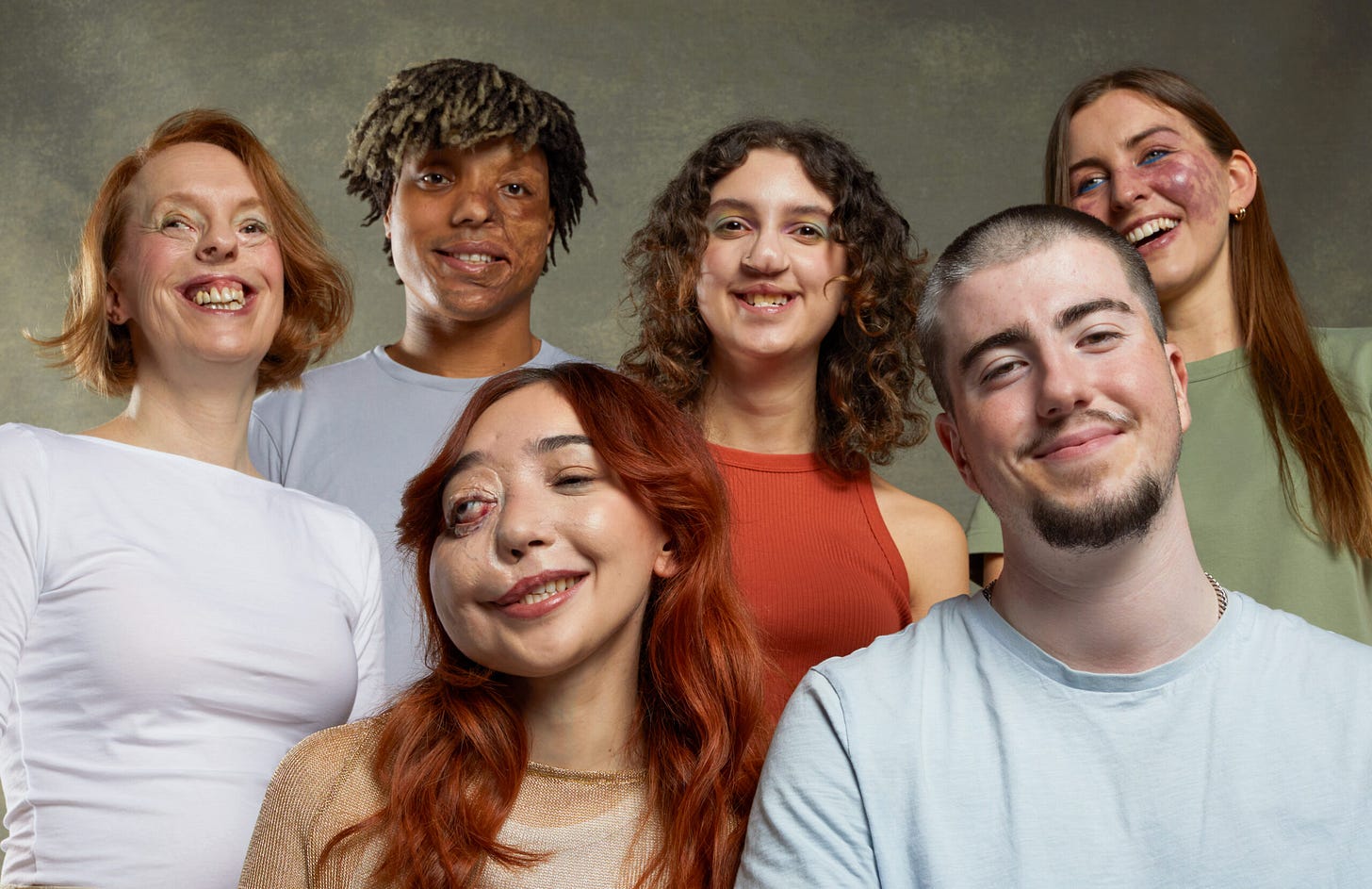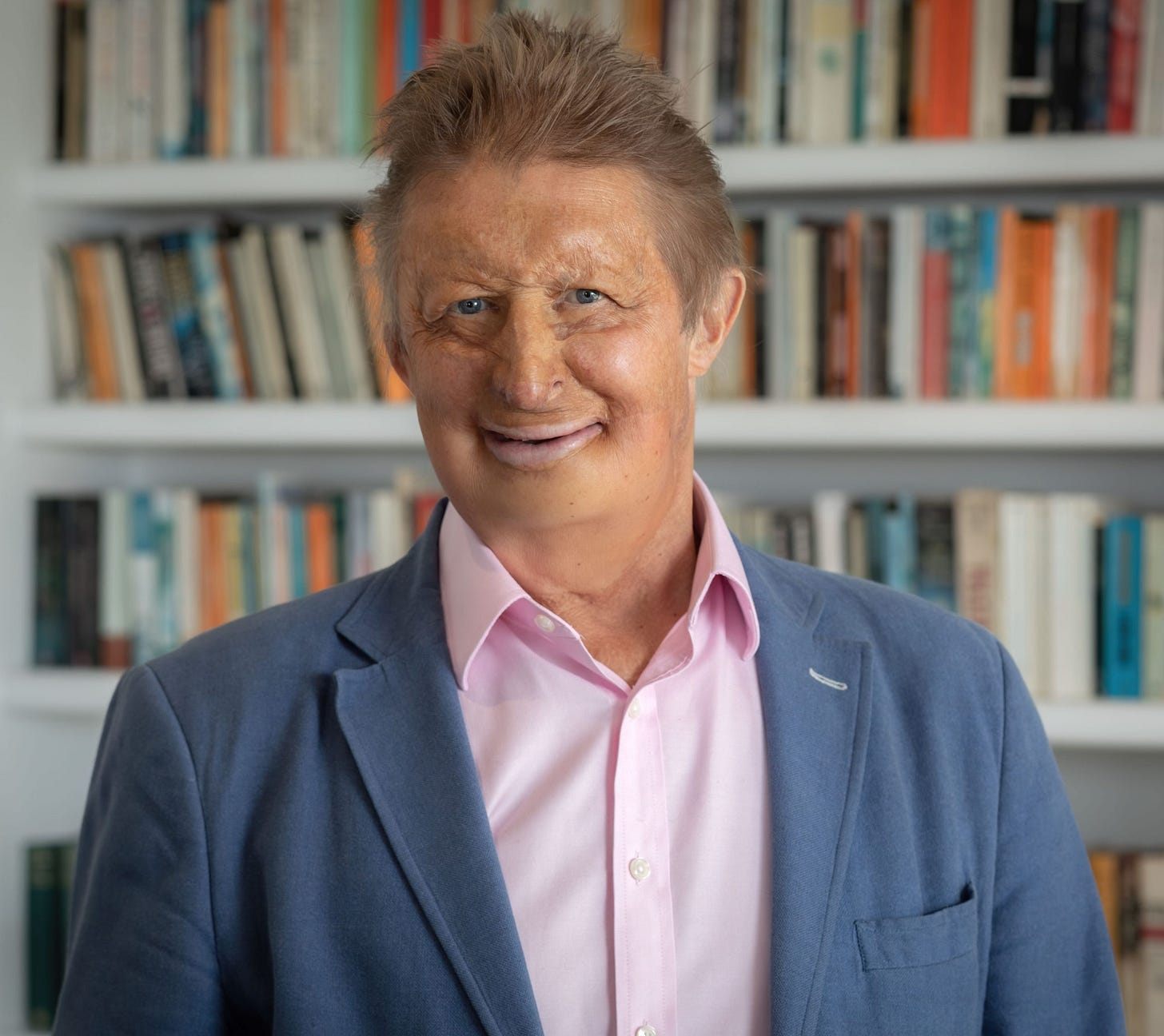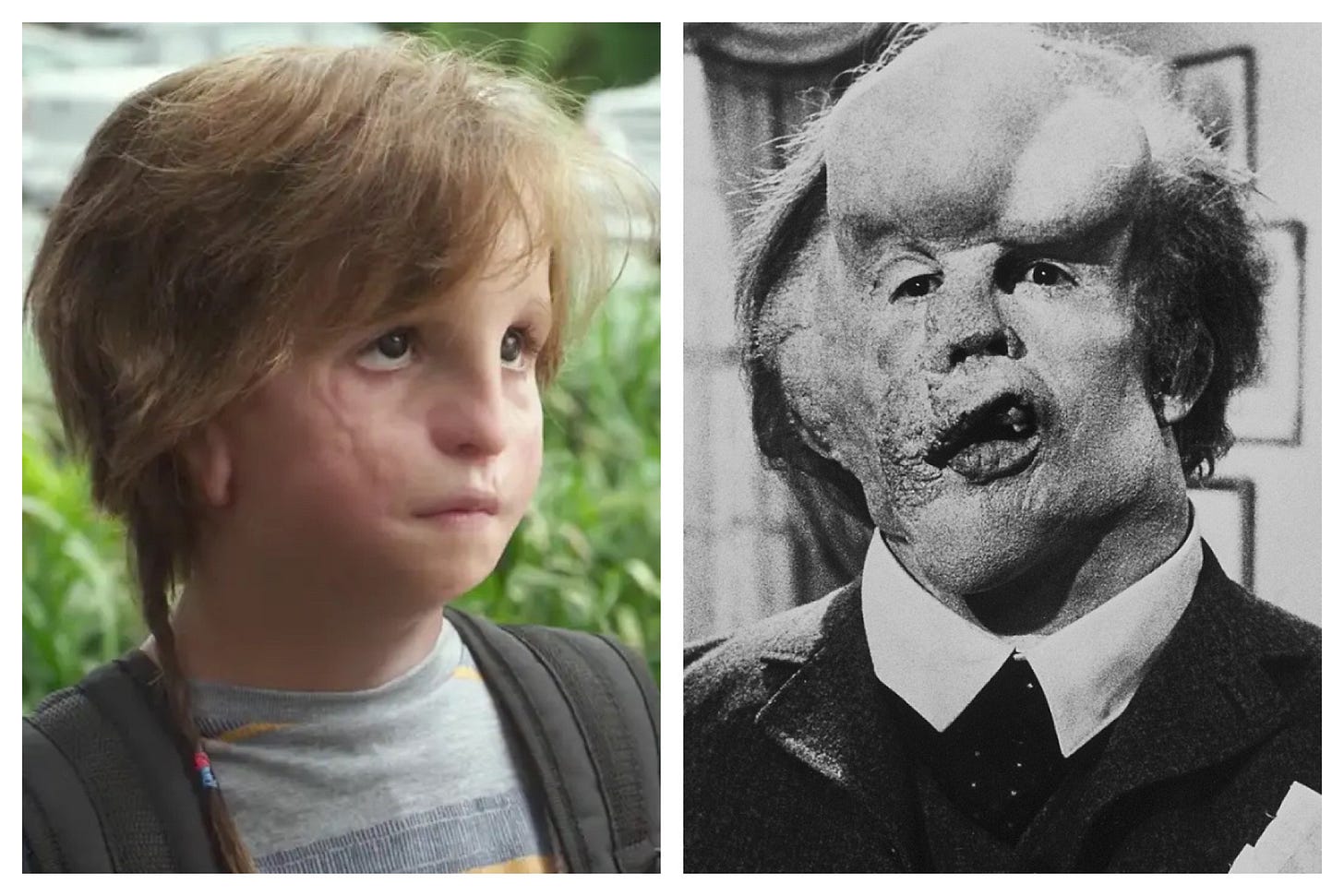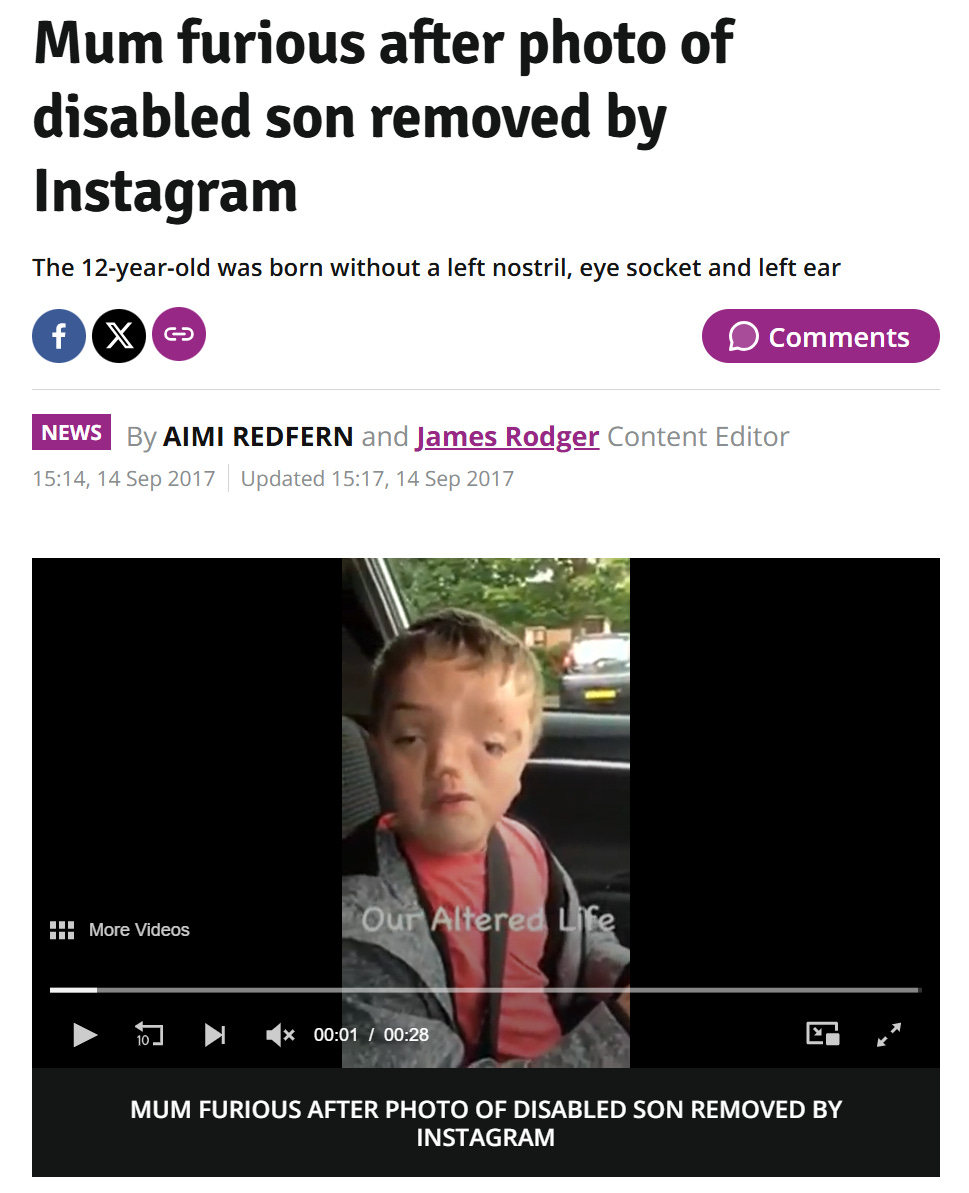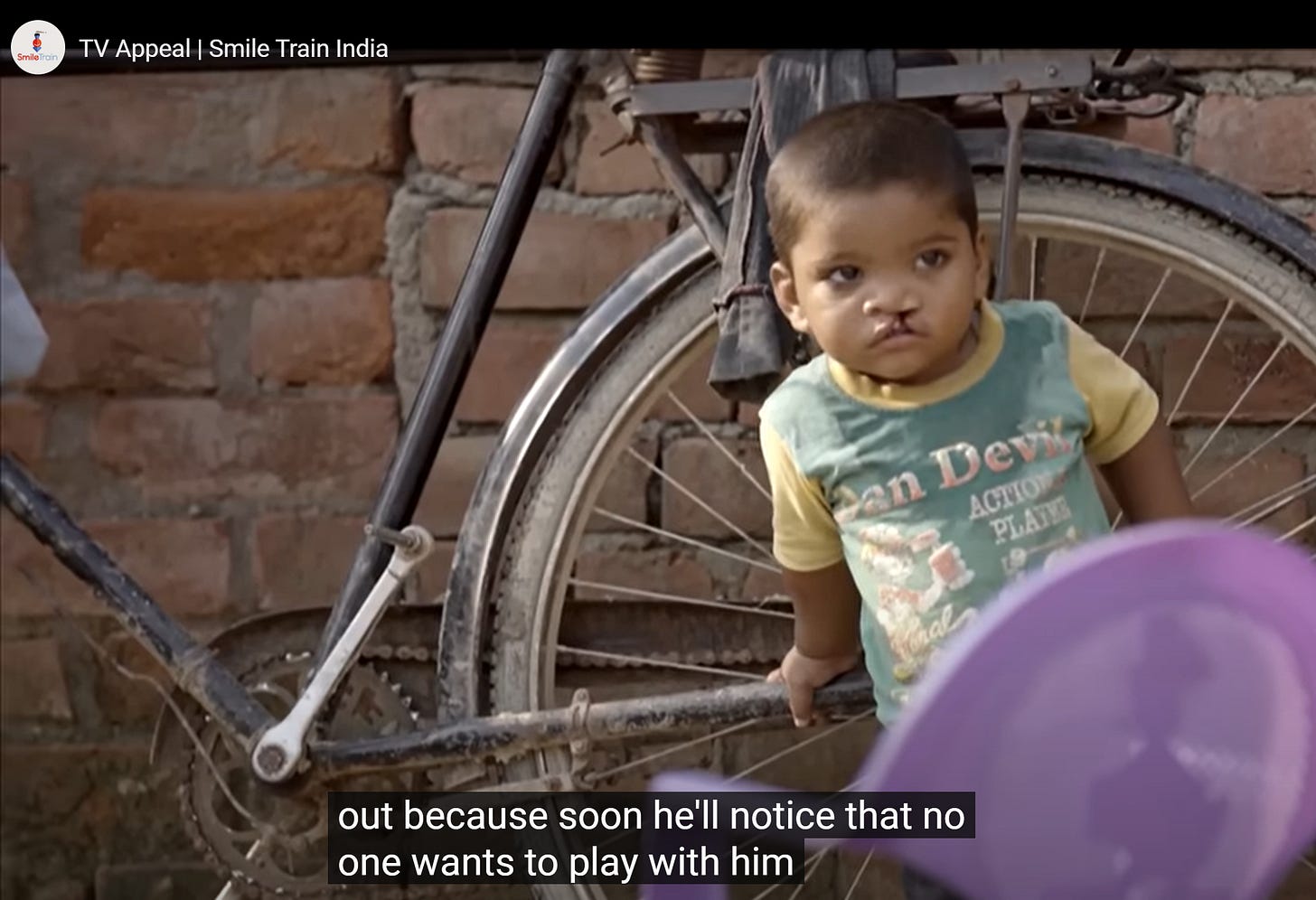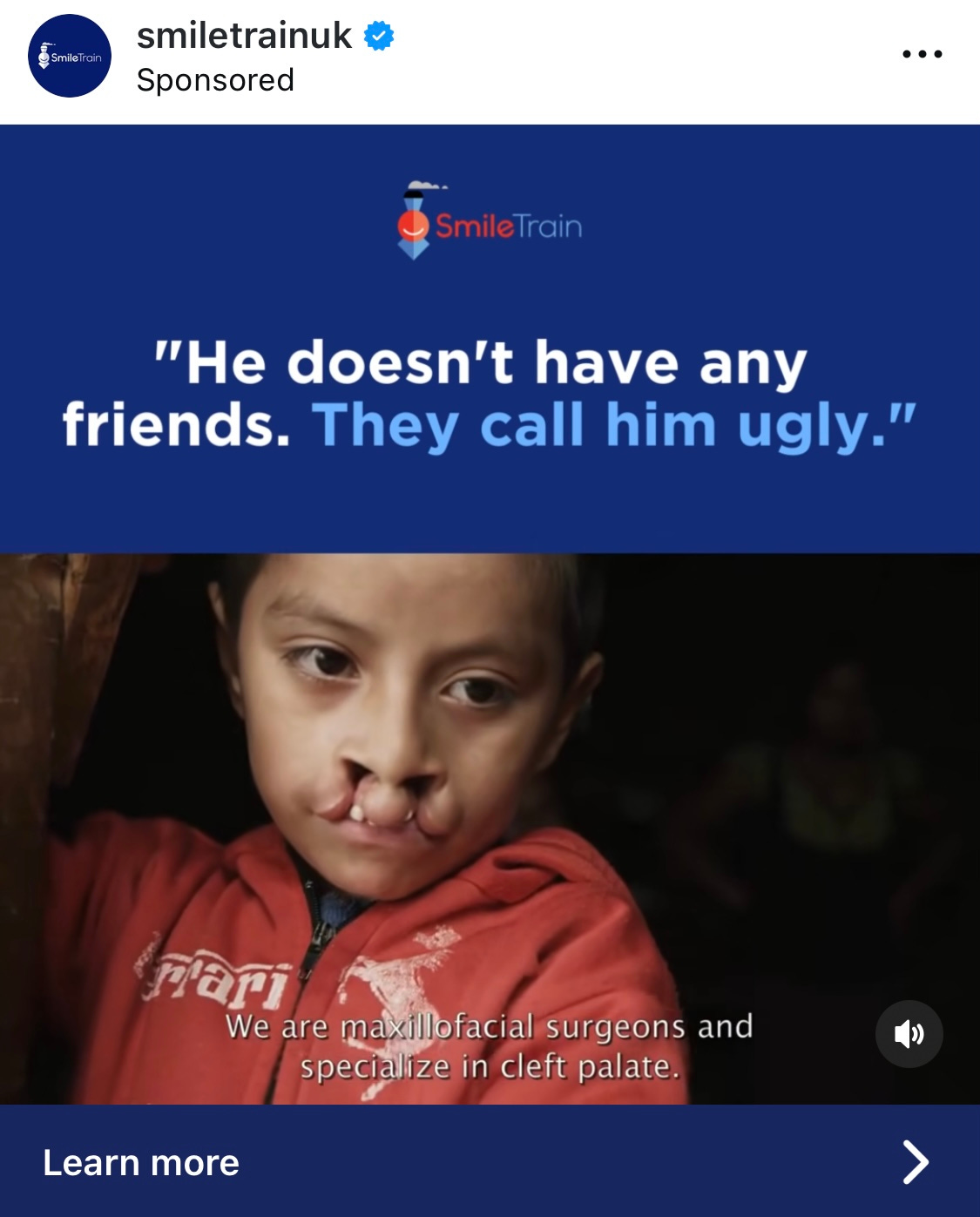In 2008, the late James Partridge, a campaigner and founder of the charity Changing Faces, launched Face Equality, a social movement dedicated to normalising and de-stigmatising facial disfigurement.1
By challenging prejudice and reducing discrimination, the movement advocates for fairness and inclusion for all, regardless of how someone looks.
Simply put, Face Equality means treating individuals fairly and without discrimination based on their facial appearance.
Why Face Equality Matters
Facial non-conformity is a natural part of human diversity and should not be a barrier to equal treatment. However, people who have conditions that affect their appearance still face discrimination, stigma, and exclusion in many areas of life.
Just like race, gender, and disability equality, Face Equality is a human rights issue.
Appearance non-conformities can arise from a variety of causes, including:
· Birth conditions like cleft lip and palate and Treacher Collins syndrome
· Skin conditions like vitiligo and birthmarks.
· Injuries that cause scarring or burns.
· Medical conditions like Bell’s palsy or facial paralysis.
At least 1.3 million people in the UK have a disfigurement, including 569,000 affecting the face.
The Barriers to Face Equality
Face equality for people with facial non-conformity, whether from disfigurement or a condition, is hindered by systemic barriers that go beyond isolated incidents of bias and are woven into broader social, cultural, legal, and institutional structures. Let’s take a closer look:
🧠 Lack of Awareness and Visibility:
One of the most pervasive barriers is the lack of awareness about the experiences of people with facial non-conformity, leading to misunderstanding, neglect, and exclusion.
· Social Invisibility: Facial disfigurement is rarely recognised as a marginalised identity, leading to exclusion from diversity, equity, and inclusion conversations.
· Policy & Advocacy Gaps: Limited public recognition means facial disfigurements are often overlooked in policymaking, research, and activism, stalling systemic change.
· Cultural Silence: The absence of open dialogue fosters stigma, allowing harmful stereotypes to go unchallenged.
· Overlooked Intersections: The impact of facial disfigurement discrimination is compounded when it intersects with racism, ableism, sexism, and other biases, yet these overlaps are often ignored.
📺 Media Misrepresentation:
Media, particularly film and television, rarely represents facial disfigurements, and when it does, it reinforces harmful stereotypes rather than normalising diverse appearances.
· The Disfigured Villain: Facial disfigurement is both culturally erased and "monstered," often reduced to an aesthetic symbolising evil or moral corruption.
· The Disfigured Saint/Victim: Exceptions to the villainous trope do exist, but they often fall into the trap of tragedy or inspiration porn. The monstering and sainting of disfigured characters are just two sides of the same reductive coin. Society flip-flops between wanting to fear it and wanting to be inspired by it.
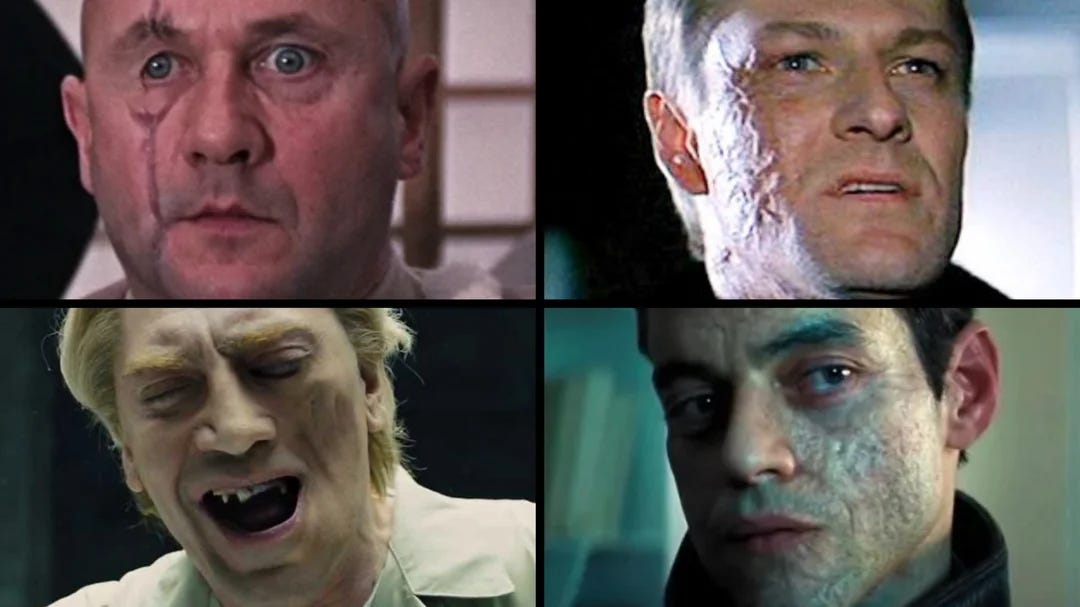
💔 Social Stigma and Bullying:
Widespread stigma affects confidence and mental health.
· A 2020 study by Changing Faces found 7 in 10 people who have a facial disfigurement experienced hostility from strangers, and over a quarter reported being targeted by hate crimes.
· Appearance-Based Bullying: People with facial disfigurements often face bullying in schools, workplaces, and public spaces, leading to social isolation and long-term psychological effects.
💼 Workplace Discrimination:
Hiring bias and outdated beauty standards limit opportunities.
· Research shows individuals with facial differences are 2x more likely to face job interview discrimination compared to those without.
⚖️ Limited Legal Protections:
Facial differences and disfigurements are often not covered by anti-discrimination laws, leaving many vulnerable.
· 🌍 Global Gap: Most countries lack explicit legal protections against appearance-based discrimination.
· 🇬🇧 UK Exception: The Equality Act 2010 protects individuals with “severe disfigurement” under disability discrimination, even without an underlying health condition.
· 🚩 Ongoing Issues: Awareness and enforcement are weak, and the subjective definition of “severe disfigurement” limits protection for many.
👩⚖️Appearance Bias in the Legal System:
· Studies have shown that individuals perceived as "less attractive" or with "unusual" facial features are more likely to receive harsher judgments, including higher conviction rates and longer sentences.
💻 Digital Technology:
· 📱 Social Media: Photos of people with facial conditions are often unfairly flagged or removed, while their images are repurposed as memes, dehumanising and reinforcing stigma.
· 🤳 Filters & Beauty Standards: Face-altering filters promote unrealistic beauty ideals and distort features for laughs, often mimicking real facial conditions as if they are flaws or jokes.
🧑⚕️🏥 Healthcare and Psychological Support Barriers:
Access to affordable medical care, psychological support, and community resources remains limited, particularly in countries without universal healthcare.
· Financial barriers often prevent individuals from obtaining essential medical and mental health care, affecting both physical and emotional well-being.
· Society tends to view facial disfigurement as something to be "fixed," overlooking the importance of mental health support to address the emotional impacts of appearance-related discrimination.
· Surgery is frequently positioned as a tool for discrimination prevention rather than personal choice, raising important ethical concerns about autonomy and societal pressures.
👎🚫 The Belief That Face Equality Is Impossible:
Perhaps the most pernicious obstacle is the complete lack of belief in its possibility.
If you have a face that’s considered too different, society will acknowledge your vulnerability to discrimination but will not work to create a world where it doesn’t happen. Facial disfigurement is often treated as too difficult or too stigmatised to accept. Instead, assimilation, often through surgery, is seen as the only way to prevent discrimination. True liberation is viewed as unattainable.
Now, you don’t need to be an expert in identity politics to see that treating discrimination as an immovable obstacle, something its victims must simply learn to navigate, is a deeply flawed response. It’s an acknowledgement of discrimination, but one that refuses to address it properly. Rather than challenging those who cause harm, society shifts the burden of adaptation onto the people who are harmed. By doing this, we insult those who face discrimination. We treat them as if they’re too difficult to respect, as if their equality is an unreasonable demand instead of a basic human right.
To be clear, it’s not that pursuing healthcare is wrong. But when discrimination is addressed by encouraging a minority group to remove or disguise their persecuted characteristics without also fighting for their right to be accepted as they are, that’s not discrimination prevention; it’s discrimination appeasement.
This is especially complicated for people like me, who have a craniofacial condition. As Gaga says, I was 'born this way.' For the record, I don’t consider this to be a particularly great affirmation. Defending an identity on the basis that it’s not a choice carries the unfortunate implication that if it were a choice, it would be a bad one. Nonetheless, my facial disfigurement (cleft lip and palate) is as much a part of who I am as any other identity characteristic. So, when the response to my discrimination is focused on hiding it, medical support veers into a form of identity erasure and suppression.
It’s worth considering the extent to which disfigurement and facial non-conformity are altered, not for the autonomy of the individual, but for the comfort of others.
The truth is facial disfigurement is ultimately irremovable. I had healthcare, and I still have a facial disfigurement. Almost all people in countries with advanced healthcare systems have had their facial condition modified or reduced through medical care, yet they still experience discrimination. Facial non-conformity is a natural part of human diversity: It’s here to stay. Therefore, we must actively encourage and foster acceptance, rather than give in to the demands of discrimination. To refuse is to abandon the very pursuit of equality itself. If we don’t believe in everyone’s equality, we can’t truly claim to believe in equality at all.
“Difference is a teacher. If we fear it, we learn nothing.” - Hannah Gadsby
How We Can Create Change
While the barriers to face equality are real, change is possible. Challenging perceptions requires both personal reflection and collective action. Here’s how we can make a difference:
💭 Reflect on Personal Biases
Start with self-awareness by examining your own assumptions about beauty, normality and facial non-conformity.
📖 Educate Yourself
Learn how history, literature, and media have shaped biases against facial disfigurement.
✊ Include Face Equality in Intersectional Politics
Recognise how appearance-based discrimination intersects with other forms of bias, including racism, ableism, and sexism. Make Face Equality part of your broader commitment to social justice and equity.
🗣️ Amplify Voices
Share the stories and work of individuals from the community (e.g., Ariel Henley, Jen Campbell, Arron Schimberg).
📺 Challenge Media Misrepresentation
Advocate for authentic, nuanced portrayals instead of harmful stereotypes. Promote diverse appearance representation and support intelligent and humane representation.
🎬Film recommendations: Dirty God, A Different Man, Silver Haze
🚩 Call Out Discrimination
Confront appearance-based bias when you see it and support those affected.
🤝 Advocate for Inclusive Policies
Remember Face Equality when pushing for anti-discrimination measures in workplaces, schools, and public spaces.
🌍 Support Advocacy Groups
Contribute to organisations like Face Equality International that drive policy change and community support
✨Believe in Face Equality
This one’s essential, but many people struggle with it, so much so that facial discrimination, particularly the kind directed toward disfigurement, is often dismissed as just “human nature.” However, this argument falls apart when you consider that everything humans do is, by definition, human nature. Invoking this basic fact to explain away discrimination isn’t insightful; it’s sophistry, a way to rationalise inaction. You could construct an anthropological theory to explain any harm we inflict on one another, but that doesn’t make it acceptable. Taking a que sera, sera attitude toward preventable harm isn’t wisdom; it’s discrimination. Anyone who claims to believe in equality should reject it outright.
We must resist the pernicious defeatist pragmatism that refuses to imagine a better world.
And finally, Face Equality would not be where it is today without the late James Partridge, who dedicated his life to challenging discrimination and changing perceptions. In this video, he shares what Face Equality means:
James Partridge: How I'm using my face to challenge attitudes | ITV News
The term facial disfigurement is used here because it aligns with both medical and legal definitions, and it is my personal preference. I believe it best captures the political and material reality of having facial non-conformity in a world where appearance-based discrimination exists. Some prefer facial difference or visible difference, but I avoid these terms as they can feel vague or euphemistic, much like replacing disabled with differently abled.


